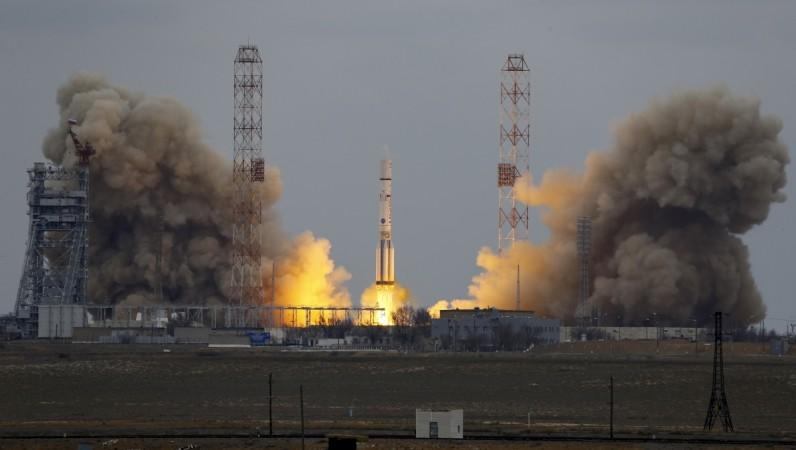
The ExoMars 2016, a joint space mission by the European Space Agency (ESA) and the Russian space agency Roscosmos, lifted off Monday from the Baikonur Cosmodrome in Kazakhstan on a Russian Proton rocket. The ExoMars is set to reach the red planet in seven months where it will investigate if the source of methane gas on the planet is biological or geological.
The mission will also be an indicator about the presence of life on mars.
This is a two-part mission, the first of which took off Monday, March 14. The satellite had a Trace Gas Orbiter (TGO) plus an Entry, Descent and Landing Demonstrator Module, Schiaparelli.
The second mission, scheduled for 2018 but more likely to take place in 2020, will consist of a rover and will drill into the surface, the BBC reported.
After travelling for seven months, the Schiaparelli will separate from the TGO on October 16. It will take another three days to land on Mars' Meridiani Planum. After landing on the surface of Mars, the information gathered by the Schiaparelli will be relayed by the Mars Express, which is already on the red planet, according to the ESA.
The orbiter will be taking on a 300 mile journey through space, the Telegraph reported. The vehicle is carrying a weight off 4332 kg (including fuel). The orbiter weights 3732 kg, including 113.8 kg science payload, and the Schiaparelli weighs 600 kg, according to the ESA.
The Schiaparelli will be landing on the surface of the red planet during the dust-storm season, which will help in analysing the contribution of electric forces on dust lifting i.e. the mechanism that starts dust-storms, the ESA website said.
The TGO will begin manoeuvring into orbit and will begin science projects after a year. The orbiter is travelling with about 1.5 tonnes of MON (mixed oxides of nitrogen) and one tonne of MMH (monomethylhydrazine). It has a capacity of 1,207 litres of fuel, according to the ESA.
The blast off took place at 9.31 a.m. GMT. You can see the lift-off here.

















